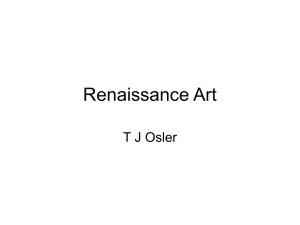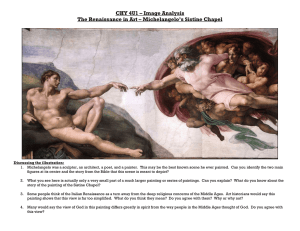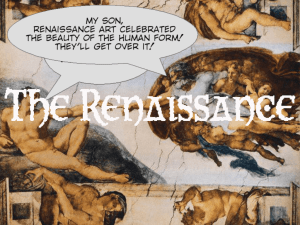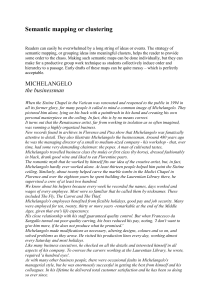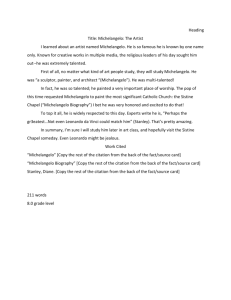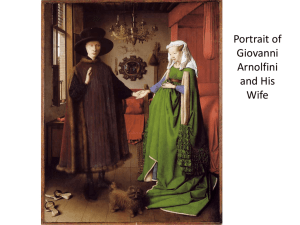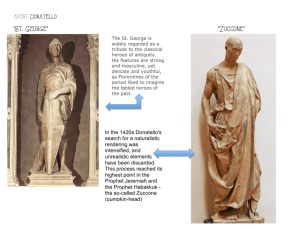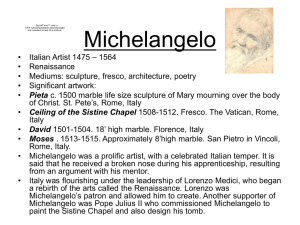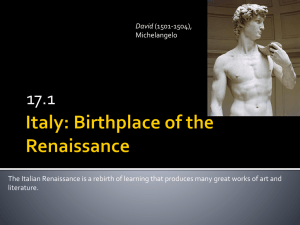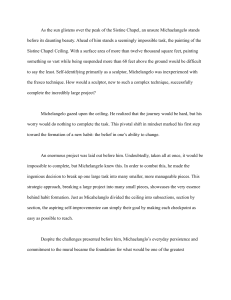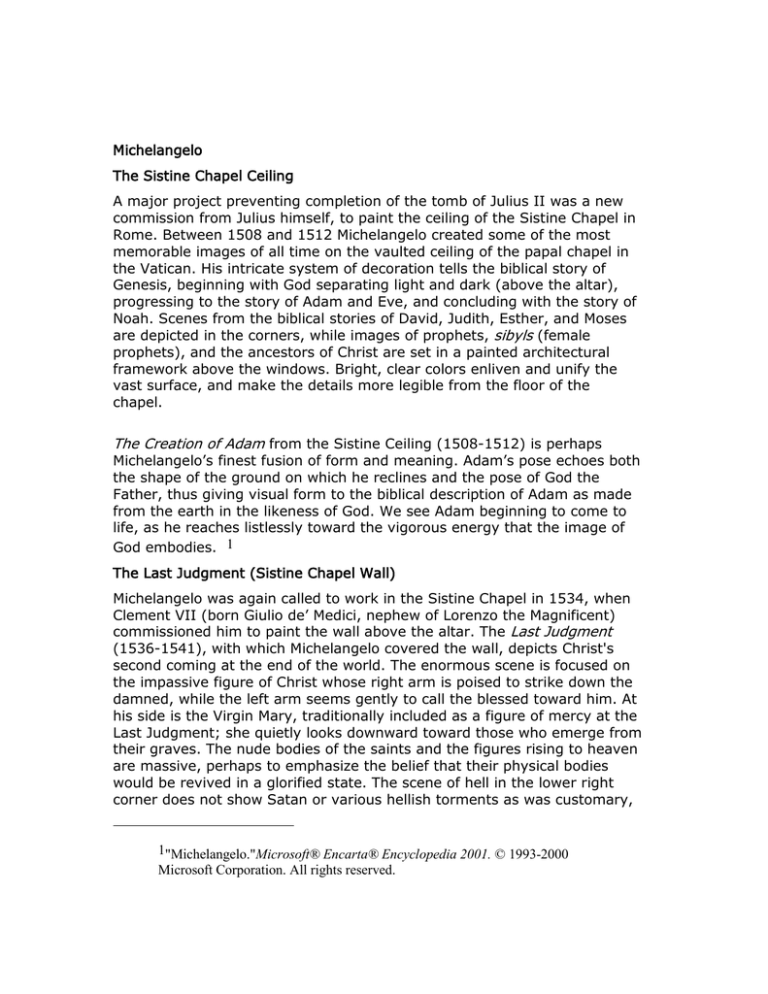
Michelangelo
The Sistine Chapel Ceiling
A major project preventing completion of the tomb of Julius II was a new
commission from Julius himself, to paint the ceiling of the Sistine Chapel in
Rome. Between 1508 and 1512 Michelangelo created some of the most
memorable images of all time on the vaulted ceiling of the papal chapel in
the Vatican. His intricate system of decoration tells the biblical story of
Genesis, beginning with God separating light and dark (above the altar),
progressing to the story of Adam and Eve, and concluding with the story of
Noah. Scenes from the biblical stories of David, Judith, Esther, and Moses
are depicted in the corners, while images of prophets, sibyls (female
prophets), and the ancestors of Christ are set in a painted architectural
framework above the windows. Bright, clear colors enliven and unify the
vast surface, and make the details more legible from the floor of the
chapel.
The Creation of Adam from the Sistine Ceiling (1508-1512) is perhaps
Michelangelo’s finest fusion of form and meaning. Adam’s pose echoes both
the shape of the ground on which he reclines and the pose of God the
Father, thus giving visual form to the biblical description of Adam as made
from the earth in the likeness of God. We see Adam beginning to come to
life, as he reaches listlessly toward the vigorous energy that the image of
God embodies. 1
The Last Judgment (Sistine Chapel Wall)
Michelangelo was again called to work in the Sistine Chapel in 1534, when
Clement VII (born Giulio de’ Medici, nephew of Lorenzo the Magnificent)
commissioned him to paint the wall above the altar. The Last Judgment
(1536-1541), with which Michelangelo covered the wall, depicts Christ's
second coming at the end of the world. The enormous scene is focused on
the impassive figure of Christ whose right arm is poised to strike down the
damned, while the left arm seems gently to call the blessed toward him. At
his side is the Virgin Mary, traditionally included as a figure of mercy at the
Last Judgment; she quietly looks downward toward those who emerge from
their graves. The nude bodies of the saints and the figures rising to heaven
are massive, perhaps to emphasize the belief that their physical bodies
would be revived in a glorified state. The scene of hell in the lower right
corner does not show Satan or various hellish torments as was customary,
1"Michelangelo."Microsoft® Encarta® Encyclopedia 2001. © 1993-2000
Microsoft Corporation. All rights reserved.
but is based instead on the Inferno, part of an early 14th-century epic
poem, The Divine Comedy, by Italian writer Dante Alighieri. This and many
other aspects of the Last Judgment (especially the nudity) were sharply
criticized soon after the fresco was unveiled and helped it become one of
the most talked about and most frequently copied works of art in the 16th
century.2
2"Michelangelo."Microsoft® Encarta® Encyclopedia 2001. © 1993-2000
Microsoft Corporation. All rights reserved.

